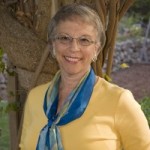When Deborah Lee Rose was a little girl growing up in Philadelphia she practically lived in the public library. “[It] was like my second home, especially on long summer afternoons when I could spend hours reading uninterrupted in the children’s room.” Out of the hundreds of children’s books Rose has read, her favorite is Charlotte’s Web. “Charlotte is a writer like I am. . .She thinks a long time before she starts to write, she researches and checks her spelling (with a little help from her friends), she likes to work when it’s quiet, and she shows off her work in the best light possible. She loves words and understands they are powerful—they can teach, surprise, entertain, convince, and even save a life.”
Rose has been a writer all of her adult life. After graduating from Cornell University in 1977, she was an editor for Time-Life Books before turning to science writing at the University of California, Berkeley. There she interviewed scientists and wrote about their work for the general public. “I think it’s important for children to know that writing is a skill that can be used in any field, from children’s books to sports to computers.” When her daughter was born, Rose wrote her first children’s story, The People Who Hugged the Trees (Roberts Rinehart, 1990)—an environmental folk tale published in eleven languages and included in several textbooks.
The Rose Horse (Harcourt Brace, 1995) weaves Rose’s memories of her father around a fictional family of carousel horse carvers in 1909 Coney Island. “One of my favorite scenes in the book is when the main character, Lily, wakes up in the middle of the night to find her father working on a very special piece of art. This came from one of my clearest, real memories of my father.”
In each story that Rose writes, she grapples with words—their sounds, rhythms, and meanings. “Perhaps the biggest misconception [about writing for children] is that it’s easy because the language is less complicated. It takes work to capture complex concepts in simple words, and to find new ways to present what is familiar.”
Before Rose commits an idea to paper, she ponders, reads, researches, and browses bookstore and library shelves. “I may think about an idea for many months before I start writing it down.” During the research phase of Into the A, B, Sea (Scholastic Press, 2000) and the companion book, One Nighttime Sea (Scholastic Press, 2003), she collected information about various ocean animals from books, videos, the Internet, places she visited, people with whom she spoke, and her own observations. “I do a lot of research that never shows up in the book, but still influences what does get included and how.” In the end, she chose ocean animals which “best captured the ocean’s diversity and suited the rhythm and rhyme.”
Rose exercises her writing muscles much like a runner exercises her running muscles by taking advantage of new experiences (especially those close to home) to enrich her creativity. While visiting the zoo, Rose tried to think of a party idea for her son’s birthday. “It suddenly came to me. All the animals wanted to get into the act!” In Rose’s newest book, Birthday Zoo (Albert Whitman, 2002), the animals plan the party, offering bits of advice in cheery rhyming couplets. “Recycle the paper reminded the tapir. Get them to laugh advised the giraffe.” Memories of the Dr. Seuss books and Ogden Nash poems she read as a child flooded back, spurring on the playful rhymes.
One of Rose’s favorite destinations is the ocean. “I’ve had the amazing experience of watching a wild humpback whale breaching just off the California coast. I often visit the Monterey Bay Aquarium and other aquaria to get a close-up look at undersea life. I love to swim myself (and sometimes pretend that I’m a whale underwater!). . .When I write, I can’t help but put my own feelings and experiences into the words and events.” The idea for Into the A, B, Sea unfolded as she drew letters in the sand for her son during a visit to the Monterey Peninsula. One Nighttime Sea puts to rest the childhood notion that because we sleep, the ocean does, too.
“Writing children’s books has helped me discover so many new things, like ocean life, and rediscover old things, like my boundless love of reading. Through reading children’s books I’ve had the joy of close times with my own children, and through writing children’s books, I’ve shared a part of myself with children around the globe.”


